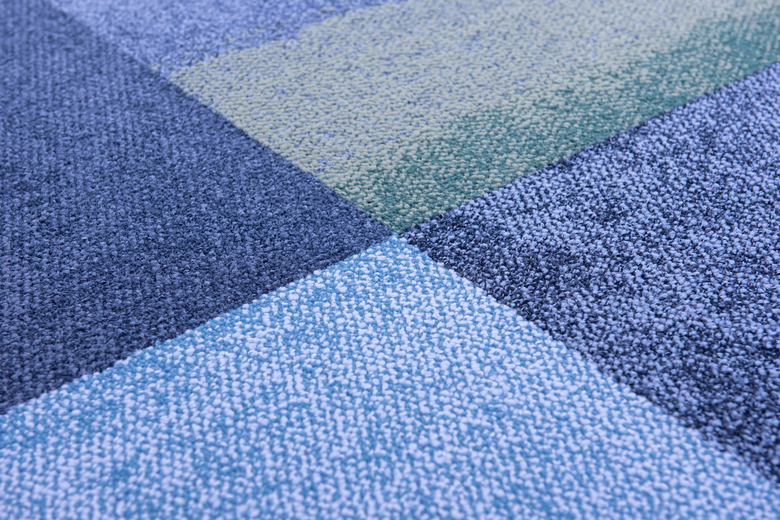Is There A Padding For Carpet Tiles?
The beauty of using carpet tile is the very reason for limited padding options. Tiles are easy to remove and replace when they become soiled or damaged, making the tiles an ideal choice for homeowners with pets, kids and a lot of foot traffic. But standard roll padding can cause problems when paired with carpet tile. Knowing more about carpet tiles can help you understand why manufacturers offer attached padding options that are worth exploring.
Definition of Carpet Tiles
Definition of Carpet Tiles
Carpet tiles are also referred to as carpet squares or modular carpet. The tiles are pre-cut squares and rectangles of carpet that are adhered to the floor using a peel-and-stick adhesive or a roll-on adhesive. Carpet tiles typically are sized from 12 to 36 inches square. Custom sizes are possible from some manufacturers.
Manufacturing styles such as tufting and needle punch are used to produce a wide variety of patterns, textures and colors. The tiles offer the possibility of a cost-effective way of changing the carpet and pattern — purchase only the tiles you need to make pattern and color changes.
Carpet Tile Installation
Carpet Tile Installation
Standard carpet padding is not used when installing carpet tiles. Standard carpet padding is cut from wide rolls of padding, similar to cutting wall-to-wall carpet, before delivering it to an installation site. Standard padding is not used because carpet tiles are individually adhered to the subfloor during installation. Roll padding cannot provide the solid, sturdy properties needed for a successful carpet tile installation.
In fact, carpet tile installations require a clean and level subfloor without padding. Although it is possible to install a roll pad and place carpet tile on top of it, it is not something manufacturers or installers recommend. Wall-to-wall padding is soft and plush, preventing carpet tiles from laying flat. This creates a walking hazard, especially for people who are unstable on their feet to begin with.
Carpet Tile Backing
Carpet Tile Backing
The backing specified when placing an order for carpet tile can provide a moisture barrier, antimicrobial protection or added strength and reinforcement that prevents buckling and curling of the tile. Additional backing materials are usually incorporated into the fiber backing and are essentially sandwiched between the yarn and any padding that might be added to the tile. The extra backing items provide protection between the padding and the yarn to help keep mildew, odors and stains from penetrating the pad and the subfloor beneath the carpet tile.
Carpet Tiles With Padding
Carpet Tiles With Padding
There is no standard attached carpet tile pad offered to buyers. Instead, the types of carpet tiles with padding will vary among manufacturers and the final choice will depend upon the needs of the homeowner. Some manufacturers will provide a high-density, eight-pound attached pad that provides some cushion when installed over a concrete substrate.
Others may offer a layer of padding that is made from recycled materials such as ground glass, fiberglass or polyester plastic derived from soda bottles. This type of pad incorporates strength and durability with the comfort of a pad and works well in high-traffic areas or when using carpet tiles for basement flooring. Attached plush carpet tile pads that feature additional traction and non-slip properties might be ideal in children's play areas.
